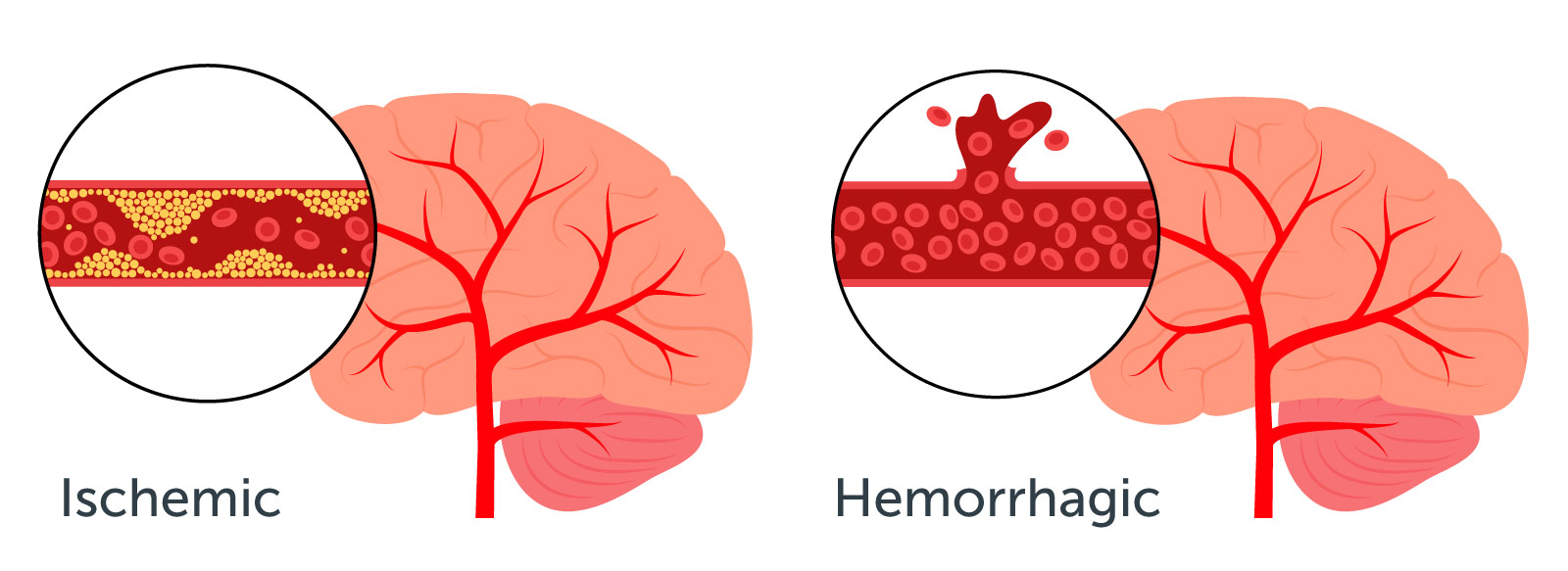If you have a medical emergency, please call 9-1-1.
Stroke is a Medical Emergency
If you think you or someone else is having a stroke, call 9-1-1 immediately and note the time of when any of the symptoms first appear. Do not drive yourself or wait for a ride from a friend or family member. Have an ambulance take you to the hospital that is a stroke receiving center right away.
Designated Stroke Receiving Centers
About Stroke
More than 700,000 Americans will suffer a stroke—or “brain attack”—this year. Of this number, 200,000 will be recurrent strokes. A stroke can injure the brain like a heart attack can injure the heart. A stroke occurs when an area of the brain doesn't get the blood it needs.
When blood flow to an area of the brain is interrupted, cells in that area die. When brain cells die, they release chemicals that set off a "chain reaction" which can damage surrounding cells.
Each area of the brain controls specific body functions and abilities including speech, movement and memory. After a stroke occurs the abilities controlled by the area where brain cells die may become impaired or lost. Without prompt medical treatment, you are at risk for increased brain damage.
Types
- Ischemic stroke - caused by either a clot or a blocked artery.
- Hemorrhagic stroke - caused by a ruptured artery and blood leaks into or around the brain.

Symptoms
Signs or symptoms for stroke seen in both men and women may include sudden:
- Numbness or weakness of face, arm or leg, especially on one side of the body.
- Confusion, trouble speaking or understanding.
- Difficulty seeing in one or both eyes.
- Trouble walking, dizziness, loss of balance or coordination.
*Signs/symptoms compiled from the National Stroke Association.
If you think someone may be having a stroke, B.E. F.A.S.T:
B – BALANCE: You may feel dizzy or unable to walk straight.
E – EYES: You may have blurred vision or difficulty seeing.
F – FACE: Does one side of the face droop when the person smiles?
A – ARM or Leg Weakness: Does one arm/leg drift downward when raised?
S – SPEECH: Is their speech slurred or strange?
T – TIME: If you observe any of these signs, call 9-1-1 immediately.
Every minute counts for stroke patients. B.E. F.A.S.T. and lead patients to the stroke treatments they desperately need. Potentially life saving medication can be administered within three hours of the sudden symptom onset to reverse stroke.
If you have a medical emergency, please call 9-1-1. If you think you or someone else is having a stroke, call 9-1-1 immediately and note the time of when any of the symptoms first appear.
Risk Factors & Prevention
Stroke prevention is still the best medicine. Learn about risk factors for a stroke and how to manage them. The most important, treatable conditions linked to stroke are:
- Atrial Fibrillation. Manage It. Your doctor can treat your atrial fibrillation and may prescribe medication to help prevent the formation of clots. If you are over 50, you and your doctor should make a decision about aspirin therapy. Learn about treating atrial fibrillation.
heart.org - Diabetes. Control It. Managing your blood sugar can decrease your risks for stroke. Learn about diabetes.
diabetes.org - High Blood Pressure. Treat It. Eat a balanced diet, maintain a healthy weight, and exercise to reduce blood pressure. Discuss medications with your physician.
nlm.nih.gov - High Cholesterol. Lower It. Diet, exercise, and medication therapy can reduce your cholesterol and lower your risk for atherosclerosis.
heart.org
nlm.nih.gov - Smoking. Quit. Medical help is available to quit.
californiasmokershelpline.org - Transient Ischemic Attacks (TIAs). Seek Help. TIA’s are “mini strokes” which last less than 24 hours. Treatment can help prevent more TIA’s or a larger stroke.
stroke.org